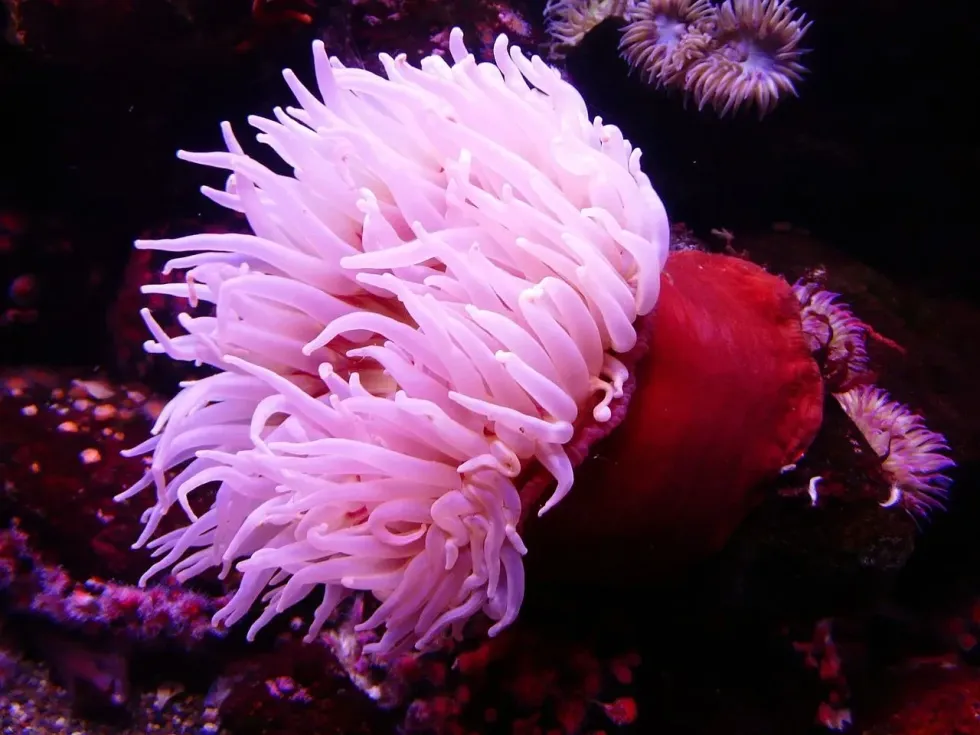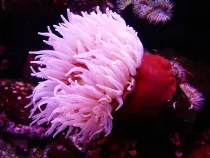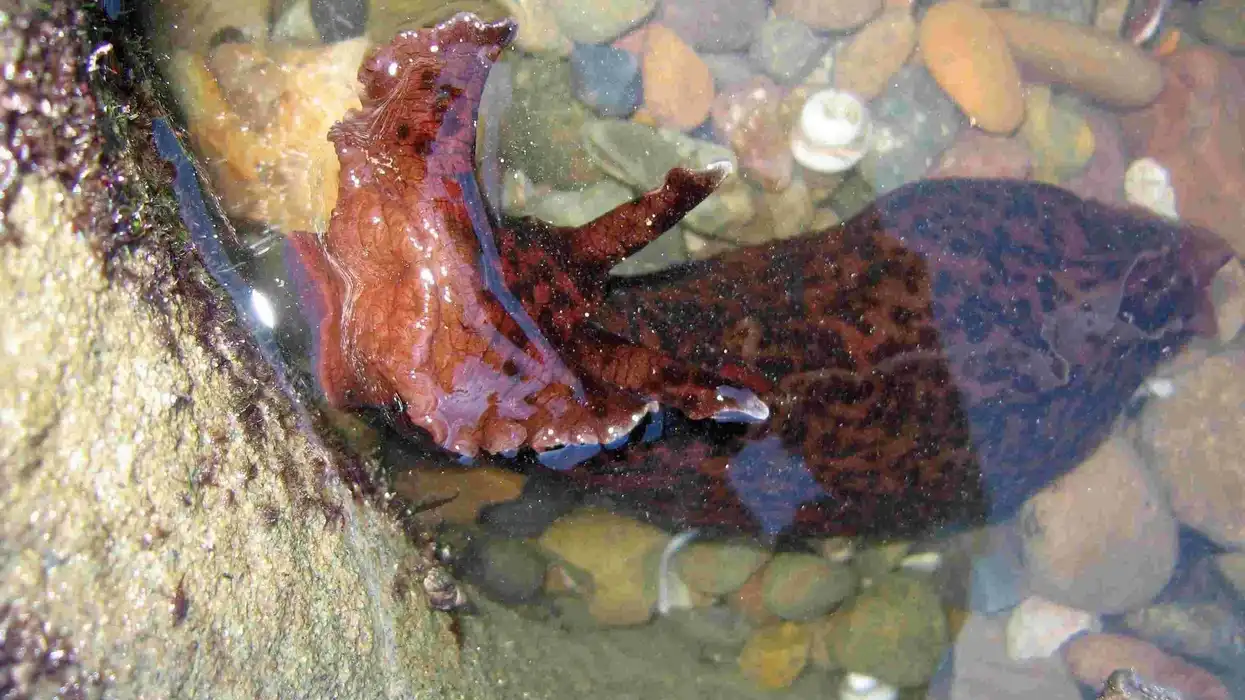Have you heard of any animals that resemble flowers but are actually a marine animal? Here we will discuss such a unique, fascinating sea creature, called sea anemone.
Sea anemones are beautiful soft-bodied living aquatic animals related to corals and jellyfish. They are also called 'flowers of the sea' because of their shape.
They are named after the anemone flower. Speaking about sea anemone anatomy, they have cylindrical bodies and have tentacles with stinging cells. These stinging cells play a vital role in the sea anemone life cycle; they sting their predators and paralyze them before eating.
The floating tentacles are often in multiples of six, keeping the prey in its hollow mouth. The mouth serves as the bottom also. Sea anemone species are invertebrates without a skeleton.
There are many varieties of these species that vary in size, color, and reproduction process. Many marine species were found hiding in the tentacles of this anemone.
Want to know more about these amazing anemones? Read on for detailed information and facts about this sea anemone. Also, check out barnacle and sea squirt facts too.
Sea Anemone Interesting Facts
What type of animal is a sea anemone?
Deep-sea anemone is a marine animal that is related to the family of jellyfish and corals. So we can say jellyfish and corals as sea anemone relatives.
What class of animal does a sea anemone belong to?
The flower-shaped sea anemone class is Anthozoa and belongs to the Animalia kingdom.
How many sea anemones are there in the world?
There are more than 1,000 different sea anemones species all over the world's oceans. They differ in color, shape, size. The giant sea anemones are found in coastal tropical waters.
Where does a sea anemone live?
The soft-bodied sea anemones are found in the Pacific Ocean, Caribbean Sea, coasts of North America, and parts of the United Kingdom.
What is a sea anemone's habitat?
The sea anemone habitat is in shallow coastal waters to deep waters (over 10,058 m) and cold waters. With the help of a pedal disc, they are attached to the hard surface like a rock, seashells, or sometimes on the crab's back.
Some species do not have a pedal disc, found burrowing themselves in the sand with tentacles exposing outside.
Who do sea anemones live with?
Sea anemones who don't stay in one place are often found living with many other sea creatures like small fish, crabs, crustaceans, and hermits for their benefit. The relationship between both parties is mutual.
For example, the Hermit Crab and sea anemone maintain a symbiotic relationship. So what is a symbiotic relationship? In this symbiotic relationship, both parties help out each other. The Hermit Crab moves around and stays along with sea anemone for food for protecting themselves from predators.
How long does a sea anemone live?
Sea anemone is one of the longest-living marine creatures. They can clone themselves, which makes them immortal. They may live up to 60-80 years in the absence of predators and diseases. The longest-lived sea anemone is 100 years old.
How do they reproduce?
These sea anemones reproduce every couple of days. The reproduction in this species is either sexual or asexual. In sexual reproduction, internal and also external fertilization takes place. In external reproduction, reproductory cells, sperm, and eggs are discharged into water and combined diffuse to fertilize.
In internal fertilization, the female sea anemone fertilizes the eggs. The larva stays inside the female body until they develop tentacles. Once the tentacles are developed, the adult one swims out of the female sea anemone's oral cavity and starts living individually.
In asexual reproduction, the sea anemone's body breaks into two parts by budding or by fission. Longitudinal fission is mainly observed in this species.
What is their conservation status?
The conservation status of sea anemone is at Least Concern. In some countries, these species are kept in reef tanks. This species population is primarily affected by pollution, environmental changes, and other such changes and problems.
Sea Anemone Fun Facts
What do sea anemones look like?
Sea anemones are ocean dwellers belong to Cnidaria (Coelenterata) phylum. Their body is known for radial symmetry (arrangements of tentacles in circular fusion, in central axis). Sea anemone resembles the anemone flowers and can exhibit rainbow colors in warm temperatures.
The sea anemone phylum is Cnidaria. The biggest sea anemone is up to 3 m in diameter. The sea anemone's outer structure is soft with polyp like looking body.
The sea anemone mouth helps take the food and release the waste. They do not have sense organs like eyes and brain. They have a centralized nervous system.
How cute are they?
Sea anemones are an attractive and colorful species with stinging tentacles. But they are killer traps. Don't go with the looks of these anemones. Though the stinging cells (nematocysts) don't penetrate the human body, one may feel stickiness and a burning sensation when we touch them because of the sea anemone stings.
How do they communicate?
When the predator attacks the sea anemones species, it gives warning signals to other anemones by releasing the chemical into the water. The symbiotic relationship with other species like crabs and other fish species is another way of communication. When someone touches its tentacles, it immediately contracts and changes into a ball shape.
How big is a sea anemone?
There are more than 1000 types of sea anemone that vary in size. Their size varies from a fraction of inches to 5 m in diameter. The size of the Horesman anemone found in British water bodies is about 35 cm. The smallest one, Gonactinia Prolifera, grows not more than 5 mm.
How fast can a sea anemone move?
We can find sea anemone swimming at low speed, one of the slowest moving animals. The sea anemone moving speed is 0.0001 kph.
They rarely remove themselves from coral or rocks, preferring to hunt by waiting for fish to come near enough to catch, but they can walk around on one foot, known as a pedal disc. The specialty of these creatures is they can change their shape instantly. They can contract, bend and twist their body shape dramatically.
How much does a sea anemone weigh?
The sea anemone, which is found in different colors, has a weight that ranges from 440 lb (199581 g) to 0.22 lb (40 g). The largest sea anemone weighs up to 440 lb (19951 g), and the smallest one weighs up to 0.22 lb (40 g).
What are their male and female names of the species?
In some sea anemones species, the male and female species are separate. While in others, they change their sex in some stages. Generally, the male one is called a male sea anemone, and the female one is a female sea anemone. There are no gender-specific names for them.
What would you call a baby sea anemone?
Once the eggs of sea anemones are fertilized, they develop into a planula larva. The planula has no mouth not able to feed themselves. They settle in the sea bed and eventually develop into juvenile polyps.
What do they eat?
As they stay in big water bodies, these species have many food sources to rely upon. The sea anemone diet mainly consists of plankton, algae, crabs, mussels, seaweed, and small fish varieties found in an ocean. Some sea anemones eat starfish and jellyfish.
Are they poisonous?
Sea anemones are highly poisonous to their prey. Because of nematocysts stings, the prey gets trapped in their tentacles. The venom causes a burning sensation. Some sea anemones' sting is toxic to humans and may lead to injuries.
Would they make a good pet?
As sea anemones stay in the deep oceans, it may not be possible to create such a type of environment in aquariums, and also taking care of them requires a lot of attention. It is not possible to take care of such sensitive species as pets.
Did you know...
Some interesting facts about the sea anemones are given below.
The clownfish and sea anemone relationship is really interesting. Did you watch the movie 'Finding Nemo?'. You might have observed that the clownfish often stay in the tentacles of sea anemones to protect themselves from predators. But why did he not get stuck in the sting of tentacles?
Because the clownfish has a mucous-like substance on its layers that prevent it getting stuck in the anemone's sting. What benefit are the sea anemones getting from clownfish? The clownfish keeps the sea anemone clean and protects it from its predators.
Sea anemone maintains a friendly relationship with green algae. Green algae provide food to sea anemone, whereas anemone provides sunlight and a safe place to live.
If the sea anemone species are white, it indicates a stressed one.
There are a few sea anemone predators - aquatic animals that eat the sea anemone. A sea anemone predator might include the Gray Sea Slug and Tompot Blenny.
Green Sea Anemone is one of the Sea Anemone types found in Alaska to Panama. The pharma industry uses it in making medicines.
Sea anemones are essential for the ocean residing species. Anemones are used as bases in cleaning the parasites by corals. This helps in increasing the fish population.
Can you imagine yourself eating sea anemone? Some people eat these sea anemones as fried chips. In China, they are used in soups.
How does a sea anemone hunt its prey?
It will be fantastic to see the hunting skills of these predatory anemones. Invertebrates stay attached to the rocks, so whenever they find small fish or crustaceans or other kinds of prey nearby, they use their tentacles with stinging cells named nematocysts to paralyze the prey.
Once the prey gets paralyzed by the tentacles, they grab the food and push it into its hollow mouth. They may sometimes extend their tentacles to catch the prey passing by.
How many species of sea anemones are there?
Sea anemones (Actiniaria) are similar to coral and jellyfish and come in various shapes, sizes, and colors in the ocean. There are said to be over 1,000 species of sea anemones.
Here at Kidadl, we have carefully created lots of interesting family-friendly animal facts for everyone to discover! Learn more about some other arthropods including sand dollar, or termite.
You can even occupy yourself at home by drawing one on our Sea anemone coloring pages.










